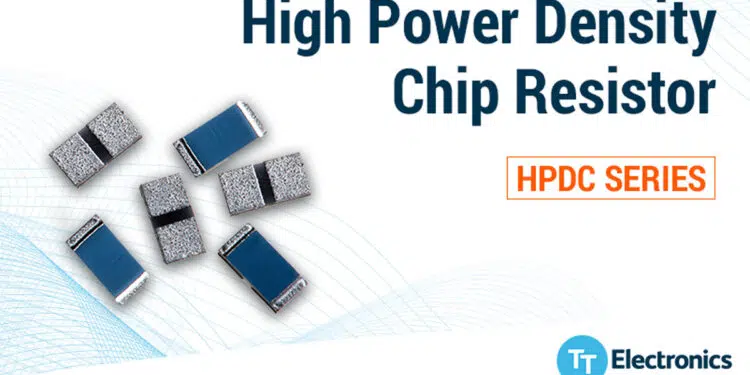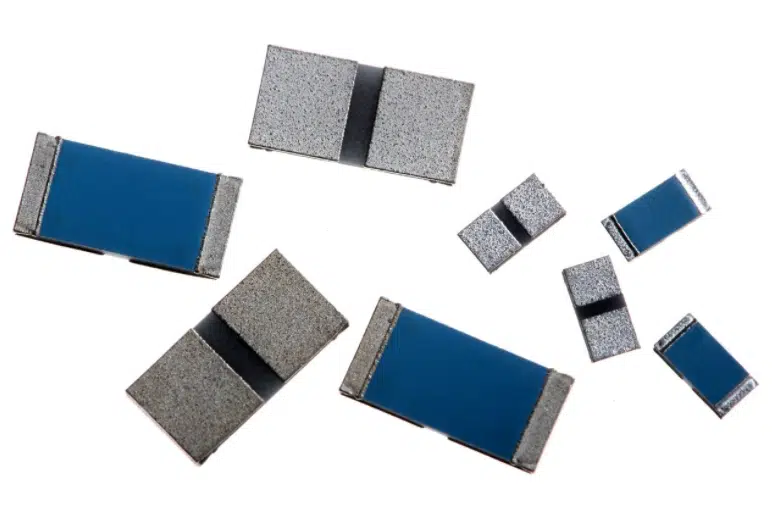TT Electronics launches HPDC series of high power density chip resistors for high continuous and momentary load applications. New thick film chips on aluminium nitride (AlN) offer power circuit designers more than three times the standard power ratings for a given chip footprint.
TT Electronics, a global provider of engineered technologies for performance critical applications, today announced the debut of its HPDC series high power density chip resistors. This specialist design is optimised for power management, actuator drive, and heating applications which benefit from the enhanced heat transfer from element to terminal. The use of such high power density components saves PCB area and boosts reliability by restricting the temperature rise in the component hotspot.
Features
- Aluminium nitride (AlN) substrate
- Wide area solder terminations
- Offers > 3x standard power density
- Power rating up to 3.5W@70°C
- Thick film element
“Aluminium nitride – with its wide area solder terminations – gives TT’s HPDC series our highest power density to date. With this product, our customers can reduce the size of their power conversion designs, while enhancing the reliability of the assembly through restricting the component hotspot temperatures,” said Brian Stephenson, Director of Engineering, TT Electronics. “These features make the HPDC family ideal for applications with high momentary load conditions, such as power supplies, motor drives, power amplifiers, and actuator controls.”
TT’s new HPDC series chip resistors use an aluminium nitride (AlN) ceramic substrate which has about six times the thermal conductivity of alumina – the conventional substrate material for chip resistors. HPDC chip resistors also feature large area terminations for improved thermal contact with a PCB. As a result, heat generated in the resistor element is effectively conducted away, reducing the temperature rise. This enables HPDC resistors to offer a high power density solution with ratings of 2.4W in 1206 and 3.5W in 2512 footprints. Short term overload performance is also enhanced at 4.7W in 1206 and 7.7W in 2512 for five seconds, making HPDC ideal in active capacitor bleed circuits. In addition, these high power resistors may be used in temperature-controlled heating applications in which the power applied is restricted only by the maximum element temperature of 155°C and the maximum termination temperature of 110°C.

































